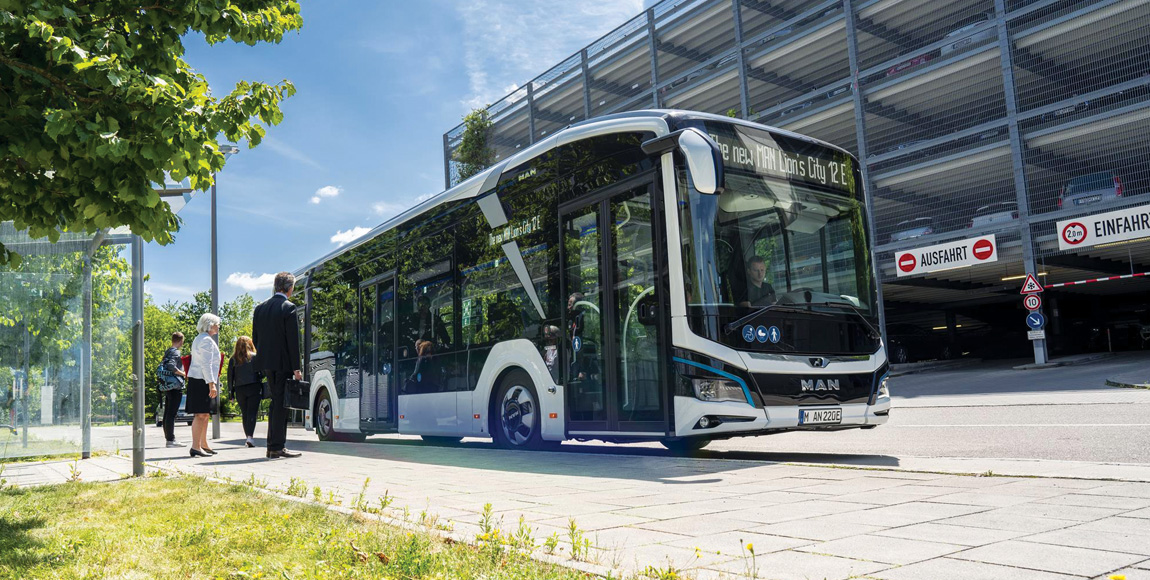An electrifying future

The bus industry is showing its resilience during tough economic times, while moving towards a more sustainable future. We predict what to expect in the years ahead.
“The bus industry in South Africa has for many years made a vital contribution to the economic and social development of the country,” states Mega Bus in its report: SA Bus Industry in Stats.
Mega Bus is a South African operator that specialises in providing passenger transport and logistics solutions to a diverse range of business sectors.
“As a provider of bus services, the industry provides mobility to millions of people who are dependent on public transport, for example, learners who require transport to and from school, workers who require transport to and from their jobs and individuals who are seeking employment or access to hospitals, as well as other services,” the report notes.
“Available statistics indicate that 70 percent of South Africa’s population is dependent on public transport for mobility.”
The report indicates that there are about 25 000 buses in the South African bus industry, of which about 19 000 are involved in formal public transport activities. “The other 6 000 buses are found in commerce and industry and government institutions where they are used mainly for in-house purposes (not for reward),” the report notes.
The economic impact of buses used for public transport are summarised as follows:
• The 19 000 buses have an estimated replacement value of R4 billion;
• The public transport buses travel an estimated 40-billion kilometres per annum and use about 506-million litres of diesel fuel;
• This sector of the industry provides direct employment to about 34 200 people throughout the country, with about
171 000 people indirectly dependent on the industry; and
• Public transport operators undertake approximately 912-million passenger trips per annum.
In its report: Bus Market – Growth, Trends and Forecast (2020 – 2025), Mordor Intelligence – an Indian-based market research consulting firm that offers advisory services, insights and investment analysis services – states that globally the bus market was valued at US$ 50,25 billion (more than R703 billion) in 2019. (The entire report is for sale at: www.mordorintelligence.com/industry-reports/bus-market.)
“It is expected to register a compound annual growth rate of 7,58 percent during the forecast period,” the report states. “The total bus stock in 2017 amounted to 17,2-million units.”
It adds that buses are the most preferred mode of public transport, as worldwide billions of people use buses for their day-to-day commute. “The demand for buses has increased significantly in recent years, especially in developing countries such as India, China, Brazil and Mexico, owing to the rapid population growth, urbanisation and government initiatives to connect rural areas to cities,” the report notes.
“Growing concerns over pollution and a rise in stringent emission regulations have encouraged countries to include a greater number of electric buses in their existing bus fleets, thereby contributing to the overall growth of the bus market,” it states.
The report notes that fuel remains a major part of the operating cost of any vehicle. “With increasing fuel costs, using electric buses for public transport is significantly cost-effective in the long run,” it points out.
The report adds that electric buses (e-buses) help reduce between 81 and 83 percent of maintenance and operating costs, compared to diesel-engine buses. E-buses also offer more comfort to travellers than their fossil fuel counterparts.
“Currently, China is the most promising market in this sector, and is likely to lead the demand for e-buses over the forecast period,” it highlights. “For instance, in 2018, nearly 23 percent of bus purchases in China were e-buses. Moreover, the overall bus purchases in the country are expected to remain stable, with more than 400 000 new purchases by 2025.”
The report adds that electric bus purchases are expected to increase, supported by ongoing government initiatives to promote e-mobility. The overall adoption of e-buses is likely to reach 40 percent of new bus purchases globally by 2040.
“The Chinese e-bus market is likely to be followed by the United States and European markets. At the end of 2019, 39 percent of European city buses had alternative drivelines. In 2018, this was 28 percent (3 340 buses had an alternative driveline out of the total of 11 845 city buses),” the report highlights.
“Furthermore, governments across the regions are taking initiatives for the promotion of electric vehicles, which are playing a pivotal role in the growth of the on-demand bus industry,” it states.
One such initiative was brought to light by the steering system specialist Pailton Engineering, which has designed and manufactured steering system components for British bus manufacturer Optare.
These components were used in the Metrodecker EV, one of the lightest double-deckers in its class, 37 of which were delivered to the London-based public transport operator Tower Transit.
This is the third major order of the high-spec e-bus model that Tower Transit has made in the last year. With this rate of adoption, the bus manufacturer expects a total of 100 units of the Metrodecker to be in operation by the end of 2020.
“Transport for London aims to electrify all double-decker buses in London by the end of this year,” explains Roger Brereton, head of sales at Pailton Engineering. “The Metrodecker EV will play its role in this mission as the world’s first zero-emission double-decker bus.”
Like the other vehicles in the Optare family, the Metrodecker has a fully integral frame. This low-floor vehicle seats over 80 passengers and has exceptional standing capacity.
“The partnership with Tower Transit has been developed through the tender process and we are now working closely together to deliver the customer’s specification,” explains Graham Belgum, chief executive officer of Optare. “This commitment is testament to the capability of the vehicle. We look forward to a successful roll-out later this year.”
Approximately 17 percent of the world’s buses are electric and the e-bus market is growing. Governments are keen to offer incentives for electrification. In the United Kingdom, the government has offered £50 million (more than R1 ,123 million) to towns pledging to create 100-percent e-bus fleets.
As the industry aims to make widespread electrification a reality, massive infrastructure projects will be necessary to ensure the buses are properly charged and can compete with their traditional equivalents in terms of route distance and flexibility (even more so in South Africa).
Designers and manufacturers of e-buses will have to be creative in overcoming some of the technical limitations of the buses themselves. This will require design flexibility, innovative pilot schemes and high-quality components. It will then be full charge ahead toward the environmental benefits of widespread electrification.
Published by
Focus on Transport
focusmagsa




